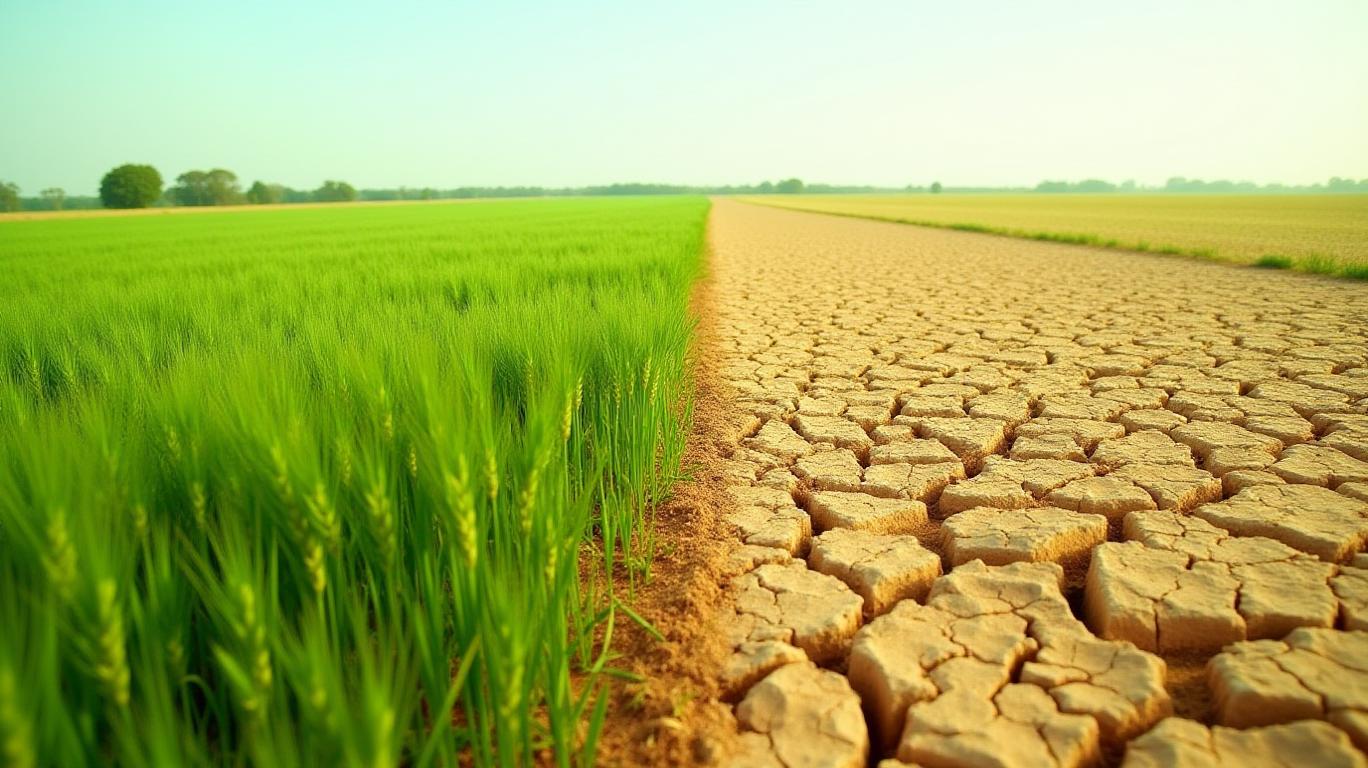Harvesting Profits in EU Soft Wheat: Navigating the Drought-Yield Paradox
The European Union's soft wheat market is caught in a striking paradox: despite regional drought risks, yield forecasts for 2025 are climbing to record highs. This divergence creates a high-stakes opportunity for investors to capitalize on weather-driven volatility, strategic commodity positioning, and global grain dynamics.

The Paradox Unpacked
The EU's Joint Research Centre (JRC) MARS report projects a 2025 soft wheat yield of 6.03 metric tons per hectare, an 8% jump from 2024's drought-stricken 5.58 t/ha. Total production is expected to hit 126.3 million metric tons, rebounding from the 2024 low of 111.7 million. Yet this optimism clashes with stark regional droughts:
- Germany, the EU's second-largest wheat producer, faces its driest February–April period since 1931, with rainfall deficits of 200mm below average.
- Poland's breadbasket and France's northern regions are under “warning” drought status, while southern Europe benefits from abundant rains.
The paradox? Favorable conditions in key southern regions (Spain, Italy) and a 2.5% increase in planted acreage offset northern deficits—for now.
Why This Matters for Investors
- Weather-Driven Price Swings:
- A 5% yield drop in Germany alone (producing ~20% of EU wheat) could tighten global supplies, lifting prices by $20–30/ton.
Global Grain Competition:
- The EU's projected 136 million-ton harvest (up 11% from 2024) could pressure prices—if droughts don't strike. Competitors like Ukraine (post-quotas) and U.S. corn-to-wheat shifts add volatility.
Currency Risks:
- A weaker GBP/EUR exchange rate (currently ~0.85) could make UK buyers of EU wheat price-sensitive, while a stronger EUR might curb export competitiveness.
Strategic Plays for Investors
Short-Term Hedging (Next 3–6 Months):
- Weather Derivatives: Use rainfall futures contracts tied to Germany's Rhine Valley or France's Seine Basin. These instruments allow investors to profit from or mitigate losses caused by precipitation shortages.
- Put Options on Wheat Futures: Lock in prices if droughts intensify, protecting against a supply shock.
Long-Term Plays (6–18 Months):
- Agribusiness Stocks: Companies like Limagrain (France) or KWS Seed (Germany) with drought-resistant seed tech could outperform.
- Farmland ETFs: Consider FAR (Invesco Global Agriculture ETF), which tracks land valuations tied to commodity prices.
Market Timing Triggers:
- Rainfall Thresholds: Monitor the European Drought Observatory's soil moisture data. A deficit of >30% in Germany/Poland by June signals a bearish outlook; <20% deficit implies bullish conditions.
- El Niño Watch: The JRC warns that emerging El Niño conditions could amplify droughts, creating a “perfect storm” for prices by late 2025.
The Bottom Line: Act Now
The EU soft wheat market is a high-reward, high-risk arena where weather, policy, and global trade intersect. Investors who monitor crop health via MARS updates, hedge with derivatives, and position for currency shifts can turn the drought-yield paradox into profit. With volatility guaranteed, the question isn't “if” to act—but “how.”
Final Call to Action:
> “The wheat fields of Europe are a tinderbox of opportunity. Deploy hedging strategies now, or risk being scorched by the next weather report.”
Nick Timiraos
Commodity Market Strategist
May 26, 2025

Comments
No comments yet